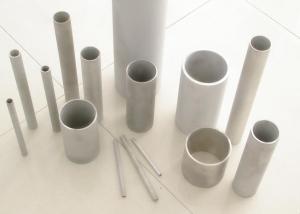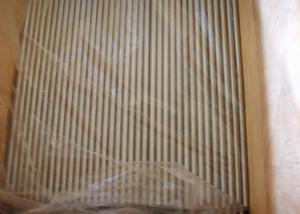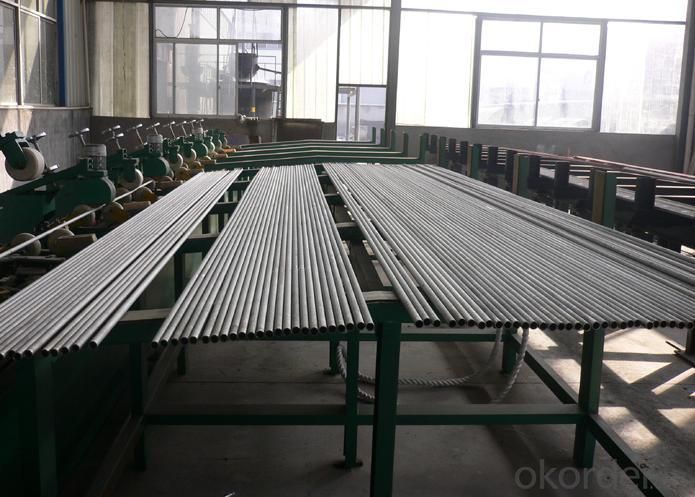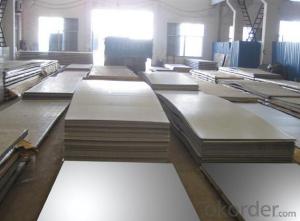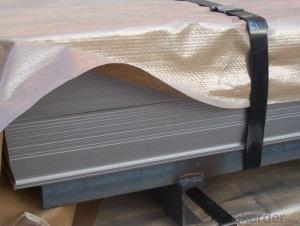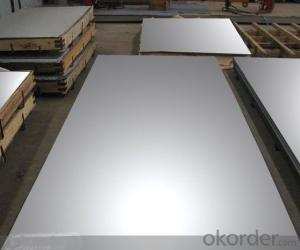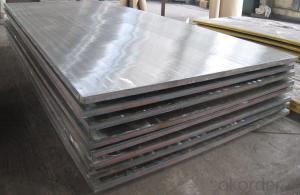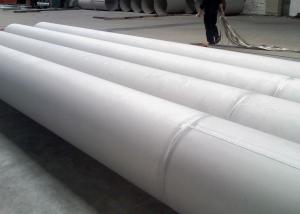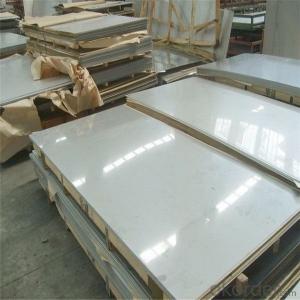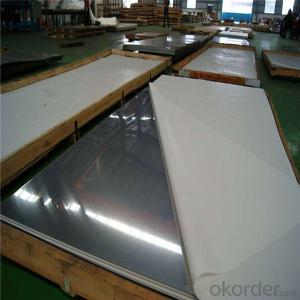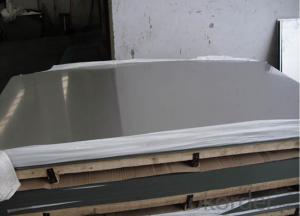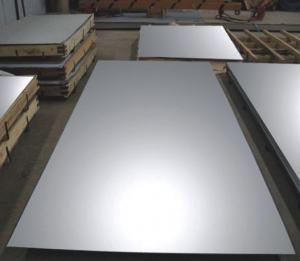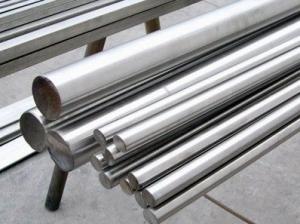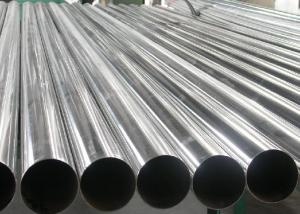904L Stainless Steel Seamless Pipe
- Loading Port:
- China Main Port
- Payment Terms:
- TT or LC
- Min Order Qty:
- 5 Tons m.t.
- Supply Capability:
- -
OKorder Service Pledge
OKorder Financial Service
You Might Also Like
Stainless Steel Seamless Pipe
APPLICATION:
Construction industry.
Chemical industry
Water tube
Pulp&Paper making industry
Heat exchanger tube,boiler tube,condenser tube,etc.
Available size range of Stainless Steel Seamless Pipe
|
OUTSIDE DIAMETER |
WALL THICKNESS | ||||||||
|
INCH |
MM |
Sch10 |
Sch40 |
STD |
Sch80 |
XS |
Sch160 |
XXS | |
|
1/8" |
10.29 |
1.24 |
1.73 |
1.73 |
2.41 |
2.41 |
- |
- | |
|
1/4" |
13.72 |
1.65 |
2.24 |
2.24 |
3.02 |
3.02 |
- |
- | |
|
3/8” |
17.15 |
1.65 |
2.31 |
2.31 |
3.20 |
3.20 |
- |
- | |
|
1/2" |
21.34 |
2.11 |
2.77 |
2.77 |
3.73 |
3.73 |
4.78 |
7.47 | |
|
3/4 " |
26.67 |
2.11 |
2.87 |
2.87 |
3.91 |
3.91 |
5.56 |
7.82 | |
|
1'' |
33.40 |
2.77 |
3.38 |
3.38 |
4.55 |
4.55 |
6.35 |
9.09 | |
|
1.1/4" |
42.16 |
2.77 |
3.56 |
3.56 |
4.85 |
4.85 |
6.35 |
9.70 | |
|
1.1/2'' |
48.30 |
2.77 |
3.68 |
3.68 |
5.08 |
5.08 |
7.14 |
10.15 | |
|
2" |
60.30 |
2.77 |
3.91 |
3.91 |
5.54 |
5.54 |
8.74 |
11.07 | |
|
2 1/2" |
73.03 |
3.05 |
5.16 |
5.16 |
7.01 |
7.01 |
9.53 |
14.02 | |
|
3" |
88.90 |
3.05 |
5.49 |
5.49 |
7.62 |
7.62 |
11.13 |
15.24 | |
|
3 1/2” |
101.60 |
3.05 |
5.74 |
5.74 |
8.08 |
8.08 |
- |
- | |
|
4'' |
114.30 |
3.05 |
6.02 |
6.02 |
8.56 |
8.56 |
13.49 |
17.12 | |
|
5” |
141.30 |
3.40 |
6.55 |
6.55 |
9.52 |
9.52 |
15.88 |
19.05 | |
|
6" |
168.30 |
3.40 |
7.11 |
7.11 |
10.97 |
10.97 |
18.26 |
21.96 | |
|
8'' |
219.08 |
3.76 |
8.18 |
8.18 |
12.70 |
12.70 |
23.01 |
22.23 | |
|
10” |
273.05 |
4.19 |
9.27 |
9.27 |
15.08 |
12.70 |
28.58 |
25.40 | |
|
12" |
323.85 |
4.57 |
9.52 |
9.53 |
17.45 |
12.70 |
33.32 |
25.40 | |
|
14" |
355.60 |
4.78 |
11.13 |
9.53 |
19.05 |
12.70 |
35.71 |
- | |
|
16" |
406.40 |
4.78 |
12.70 |
9.53 |
21.44 |
12.70 |
40.49 |
- | |
|
18" |
457.20 |
4.78 |
14.27 |
9.53 |
23.83 |
12.70 |
45.24 |
- | |
|
20" |
508.00 |
5.54 |
15.09 |
9.53 |
26.19 |
12.70 |
50.01 |
- | |
|
22" |
558.80 |
5.54 |
- |
9.53 |
28.58 |
12.70 |
53.98 |
- | |
|
24" |
609.60 |
6.35 |
17.48 |
9.53 |
30.96 |
12.70 |
59.54 |
- | |
Note : We can also produce the sizes beyond this table according to the requirements of customers
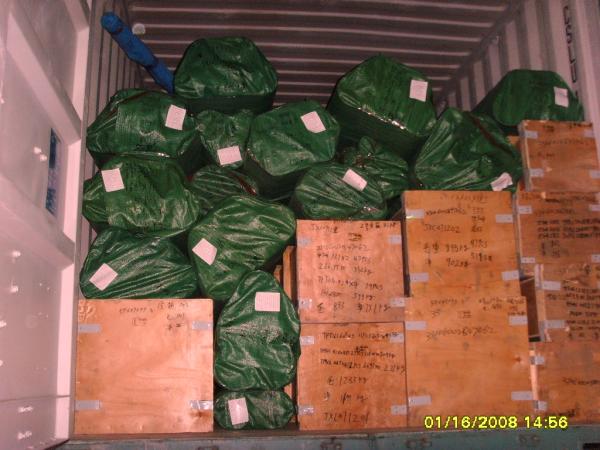
- Q: Can stainless steel sheets be bent or formed?
- Stainless steel sheets possess the ability to be bent or formed. Being a highly versatile material, stainless steel can easily take on various shapes and forms. Its excellent ductility enables it to undergo bending, stretching, or forming without any risk of cracking or breaking. However, the extent to which stainless steel sheets can be bent or formed relies on the thickness and grade of the material. Thinner sheets tend to be more malleable and easier to bend, whereas thicker sheets might necessitate greater force or specialized equipment for shaping. Moreover, particular stainless steel alloys may have specific restrictions on their formability. In summary, stainless steel sheets can be bent or formed according to precise design requirements, making them a favored choice across a wide range of industries, including construction, automotive, and manufacturing.
- Q: What are the cost considerations when purchasing stainless steel sheets?
- When purchasing stainless steel sheets, there are several cost considerations to keep in mind. Firstly, the grade of stainless steel will greatly impact the cost. Stainless steel is available in various grades, with each grade possessing different properties and levels of corrosion resistance. Higher grades such as 316 or 304 tend to be more expensive due to their superior corrosion resistance and durability. The size and thickness of the stainless steel sheets also affect the cost. Thicker sheets generally cost more than thinner ones, and larger sheets will be priced higher than smaller ones. It is important to accurately determine the required size and thickness to avoid unnecessary expenses. Surface finish is another factor that can influence the cost. Stainless steel sheets come in a range of finishes, such as brushed, mirror, or matte. Finishes that require additional processing or polishing will usually add to the overall cost. Additionally, the quantity of sheets needed can impact pricing. Bulk purchases often offer discounts or lower per-unit costs compared to buying small quantities. Transportation and delivery costs should also be considered. Stainless steel sheets are heavy and can be expensive to transport, especially if shipping long distances. It is important to factor in these costs to ensure the overall purchase remains within budget. Lastly, it is crucial to consider the reputation and reliability of the supplier. While lower-priced options may be tempting, it is important to ensure that the supplier provides high-quality stainless steel sheets that meet the required specifications. Purchasing from a reputable supplier may come at a slightly higher cost, but it guarantees the quality and reliability of the product. Overall, when purchasing stainless steel sheets, it is vital to consider the grade, size, thickness, surface finish, quantity, transportation costs, and the reputation of the supplier. By carefully considering these factors, one can make an informed decision that balances cost-effectiveness with the desired quality and specifications.
- Q: Can stainless steel sheets be used for staircase railings?
- Certainly! Staircase railings can indeed utilize stainless steel sheets. Stainless steel stands out as a favored option for such railings owing to its exceptional durability, strength, and resistance against corrosion. By cutting, shaping, and welding stainless steel sheets, a multitude of railing designs and styles can be crafted. Additionally, these sheets can be finished in various manners, such as brushing or polishing, to achieve the desired aesthetic appeal. Not only do stainless steel railings offer an appealing appearance, but they also furnish a secure and robust support for staircases.
- Q: Can stainless steel sheets be used for automotive body panels?
- Yes, stainless steel sheets can be used for automotive body panels. Stainless steel provides excellent corrosion resistance, durability, and aesthetic appeal, making it a suitable material for automotive applications.
- Q: What are the different types of stainless steel sheet patterns available?
- There exists a variety of stainless steel sheet patterns, each possessing its own distinct design and characteristics. Some commonly encountered patterns include: 1. Smooth or plain: This pattern serves as the most elementary and widespread option, showcasing a sleek and uncomplicated surface without any discernible texture or design. 2. Satin or brushed: By subjecting the stainless steel sheet to the gentle abrasion of a fine grit abrasive, this pattern is achieved, resulting in a uniform and directional grain. It imparts a subtle and sophisticated appearance. 3. Quilted or diamond: With a raised diamond-shaped design on its surface, this pattern enhances traction and slip resistance. It finds frequent application in flooring, stairs, and industrial settings. 4. Linen: Resembling the texture of linen fabric, this pattern is achieved by etching a series of parallel lines onto the stainless steel sheet. It adds a distinctive visual appeal and is suitable for various uses, including interior design and architectural projects. 5. Perforated: Comprising a series of small holes or perforations punched into the stainless steel sheet, this pattern creates a visually captivating and functional design. It is commonly employed in situations requiring ventilation or filtration. 6. Tread or checker: Displaying a raised checkerboard design on the surface of the stainless steel sheet, this pattern offers a non-slip surface. It is often utilized in flooring, stairs, and transportation equipment. These examples merely scratch the surface of the diverse array of stainless steel sheet patterns available. Each pattern offers a unique combination of aesthetics and functionality, enabling versatile use across a wide range of applications.
- Q: Can stainless steel sheets be used for walkways and platforms?
- Stainless steel sheets are capable of being utilized for walkways and platforms. This material, known for its exceptional durability and resistance to corrosion, proves to be ideal for outdoor applications such as walkways and platforms. It has the capacity to endure substantial loads, severe weather conditions, and frequent foot traffic, all while avoiding deterioration and rusting. Moreover, stainless steel possesses a sleek and contemporary appearance that can elevate the visual allure of walkways and platforms. Furthermore, it boasts easy cleaning and maintenance processes, guaranteeing extended lifespan and safety for users.
- Q: Can stainless steel sheets be used for wastewater treatment?
- Yes, stainless steel sheets can be used for wastewater treatment. Stainless steel is highly resistant to corrosion and can withstand the harsh conditions and corrosive elements often found in wastewater treatment processes. Additionally, its smooth surface makes it easy to clean and maintain, ensuring long-term durability and effectiveness in treating wastewater.
- Q: Can stainless steel sheets be used for elevator shafts?
- Yes, stainless steel sheets can be used for elevator shafts. Stainless steel is a durable and corrosion-resistant material that is commonly used in construction for its strength and aesthetic appeal. Elevator shafts require materials that can withstand constant use and exposure to various elements, making stainless steel an ideal choice.
- Q: What are the bending limits of stainless steel sheets?
- The bending limits of stainless steel sheets are contingent upon several factors, including the stainless steel grade, sheet thickness, and the specific bending process employed. Stainless steel sheets are renowned for their exceptional strength and durability, enabling them to be bent to a certain degree without fracturing or breaking. As a general rule, stainless steel sheets can be bent to a radius that is at least twice the thickness of the sheet. For instance, a 1mm thick sheet can typically be bent to a minimum radius of 2mm. It is crucial to note, however, that this is merely a general guideline, and the actual bending limits may differ based on the particular stainless steel grade. Certain stainless steel grades, such as 304 and 316, possess higher yield strengths and greater resistance to deformation, rendering them suitable for more demanding bending applications. Thicker sheets also exhibit higher bending limits in comparison to thinner ones, as they possess more material to withstand the forces of bending. Moreover, it is important to mention that the chosen bending process can impact the bending limits of stainless steel sheets. Press brake bending and roll bending are commonly employed methods for bending stainless steel sheets. These processes employ distinct techniques and equipment, resulting in varying bending limits. To ascertain the exact bending limits for a specific stainless steel sheet grade and thickness, it is advisable to refer to the manufacturer's specifications or seek guidance from a professional metal fabricator. They possess the expertise and knowledge to provide precise information and guidance on the bending capabilities of stainless steel sheets tailored to your specific application.
- Q: Can stainless steel sheets be used for elevator doors?
- Yes, stainless steel sheets can be used for elevator doors. Stainless steel is a popular choice for elevator doors due to its durability, corrosion resistance, and aesthetic appeal. It is able to withstand the wear and tear associated with daily use and is resistant to scratches, dents, and stains. Stainless steel also offers a sleek and modern look, making it a suitable material for elevator doors in various settings such as commercial buildings, residential complexes, and hotels. Additionally, stainless steel sheets can be customized to meet specific design requirements, allowing for a wide range of finishes, textures, and patterns to be applied, further enhancing the overall appearance of the elevator doors.
Send your message to us
904L Stainless Steel Seamless Pipe
- Loading Port:
- China Main Port
- Payment Terms:
- TT or LC
- Min Order Qty:
- 5 Tons m.t.
- Supply Capability:
- -
OKorder Service Pledge
OKorder Financial Service
Similar products
Hot products
Hot Searches
Related keywords

